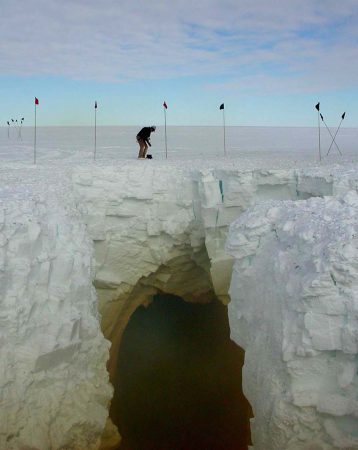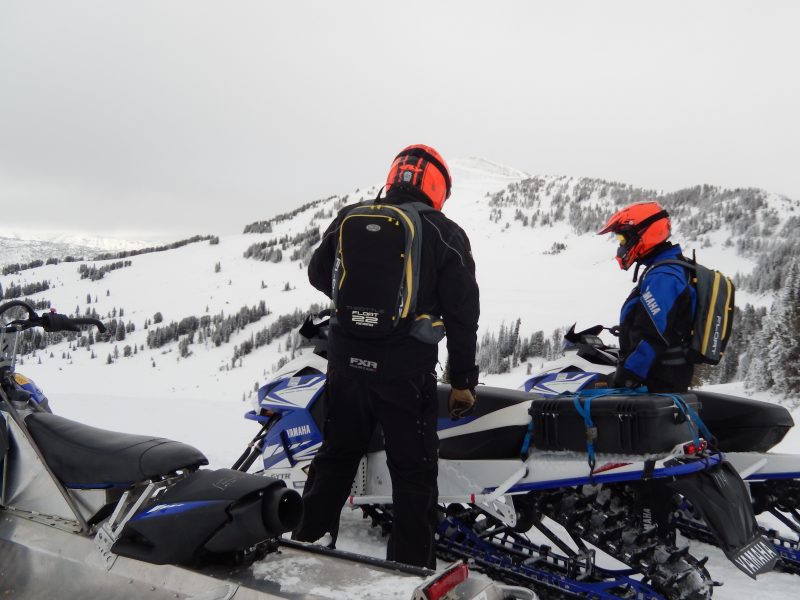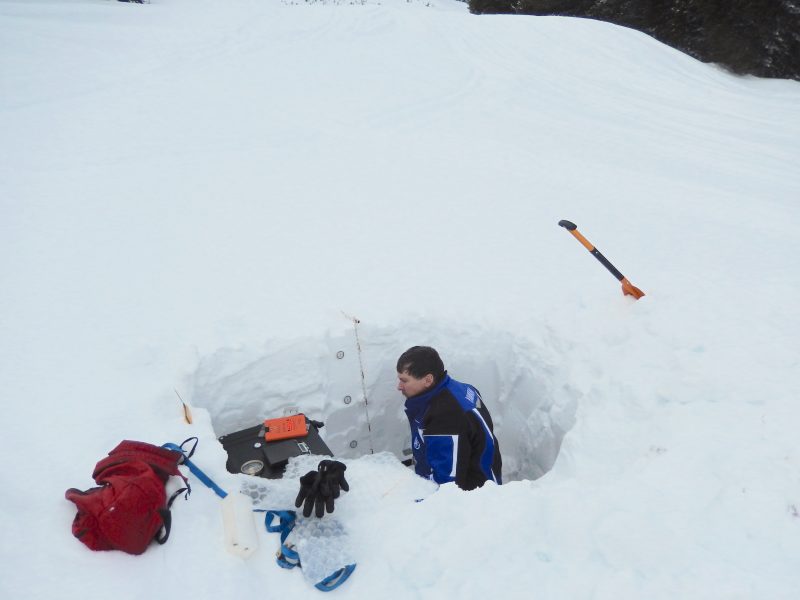Russ Alger and Tony Kunnari generously shared their knowledge on Husky Bites, a free, interactive Zoom webinar hosted by Dean Janet Callahan. Here’s the link to watch a recording of his session on YouTube. Get the full scoop, including a listing of all the (60+) sessions at mtu.edu/huskybites.

What are you doing for supper this Monday night 2/8 at 6 ET? Grab a bite with Dean Janet Callahan and Russ Alger, Director of the Institute of Snow Research at Michigan Tech.

Alger knows about snow. He’s one of the world’s top go-to guys on cold climate roads and driving, with 45 years of experience and counting. During Husky Bites, he’ll talk about the natural properties of snow as well as some of the ways that snow can be used for engineering purposes.
Also joining in will be Toby Kunnari, Test Course Manager at the Keweenaw Research Center. The KRC’s test course is spread out over 1,000 acres just a few miles away from campus at Michigan Tech.
Ever since earning his BS and MS in civil engineering Michigan Tech, Alger has been working with vehicles and terrains. If there’s a way to alter strength and friction parameters on the surface of a terrain to enhance mobility, Alger can make it happen.
Whether it involves mobility in snow, or the development of pavements made entirely from snow, Alger and other Michigan Tech engineers and scientists at the Institute of Snow Research are ready to tackle the problem. They are also experts in winter maintenance of roads and runways—both anti-icing and deicing.

“The unique weather conditions on Michigan’s Keweenaw Peninsula, coupled with our large array of equipment and facilities, makes the Institute the right place to bring your research questions,” he says.
Alger studies the deformation of soil and snow particles under vehicle loads. He has characterized these terrains using standard physical property measurement techniques as well as through the use of bevameters, automated penetrometers, calorimeters, high speed imaging, and a number of other methods to extract data in harsh environments. (He’ll explain his toolbox during Husky Bites).
Alger holds a patent on a method he invented to “manufacture” snow pavements by mechanically altering the internal snow properties and developing high strengths in the snow pack.
Between 1994 and 2016 Alger took six trips to Antarctica, as part of a team that successfully scouted and created the first trail to the South Pole, needed as an alternative to flying in supplies. Every crevasse they discovered in the route had to be exposed and filled so tracked vehicles could safely pass over.

During his last trip to Antarctica in 2016 Alger went to make one snow road better—a fifteen-mile stretch from Scott Base (New Zealand’s research center) to the Pegasus runway, where supplies and people arrive in cargo jets.
He used a special groomer he and his colleagues developed at the KRC. Called a snow paver, it has the near-magical ability to turn snow into solid roadway.
“The paver works by first chewing up the snow with a miller drum, which smashes the ice crystals so they will stick together,” Alger explains. “Then comes a vibrating compactor, to get all the air out of the snow. That action compresses it enough to make a pavement.”
At Michigan Tech Alger also invented a product called SafeLane, an epoxy-aggregate mixture that is applied to roads, bridge decks, walkways and parking lots to improve traction and safety during hazardous winter conditions. Now marketed by Cargill, the product is widely used.
It’s busy season at the Institute of Snow Research, but Alger took time from his hectic schedule to answer a few questions for us in advance of Husky Bites.
Have any snow questions of your own? Alger will answer questions live via Zoom on Monday Feb. 8 during his session. Join early at 5:45 for some extra conversation, or stay after for the Q&A.
Q: Are there any best practices for preparing roadways in winter?
A: Road supervisors and crews rely heavily on the weather forecast. Air temp, pavement temp, temperature trends, precipitation rates and total amounts, wind, time of day, and more all play into the decision making process. For example, if it is going to be below 15 degrees F, it is likely that crews would consider adding something like calcium chloride to the mix since it is better at colder temps. They might just use sodium chloride above that temp since it works well and is much cheaper. The amount of deicer needed also increases as temperature decreases and there is a point where it doesn’t pay to use deicer at all except for maybe as a “kicker” for sand applications.

Here in the UP, combining salt and stamp sands seems to work pretty well to help us get around amid all the snowfall. In most of Houghton County, stamp sand is used. It’s abundant, and the County owns some stamp sand property. On top of that, stamp sand is actually a pretty good ‘grit’ for this purpose. The grain size is right to result in traction, which is the purpose of sand. It isn’t too dusty, and most importantly, it is crushed rock, so it is angular. That means it has sharp edges that help it dig into icy pavements and grip tires.
The addition of a small amount of deicer helps the stamp sand piles from freezing up. It also helps the sand particles melt into the surface of the road and stick, making a layer that acts like a piece of sandpaper. This is a pretty effective way to increase grip of tires on the surface, which is the end goal of this operation.

Q: When did you first get into engineering? What sparked your interest?
A: I became interested in engineering at a very young age and have always loved my job and profession. My father, George Alger, was a civil engineering professor at Michigan Tech for many years. His expertise was in ice-covered rivers and cold regions engineering in general. Growing up in Dollar Bay and working with him on outdoor projects, as well as being an outdoorsman myself, pointed me down that path at a young age. In 1976, my Dad, along with Michigan Tech civil engineering professors Ralph Hodek and Henry Sanford established a new curriculum at Michigan Tech, Cold Regions Engineering. I started with them that very first year. Growing up in the Copper Country helped to make me like snow for sure.
Q: Hometown, hobbies, family?
A: I have lived outside of Dollar Bay, Michigan for most of my life. I love being outdoors and especially love hunting, fishing and cooking outside. I live with my wife and one of my sons—and enjoy doing things with all of my sons, daughters and grandchildren.